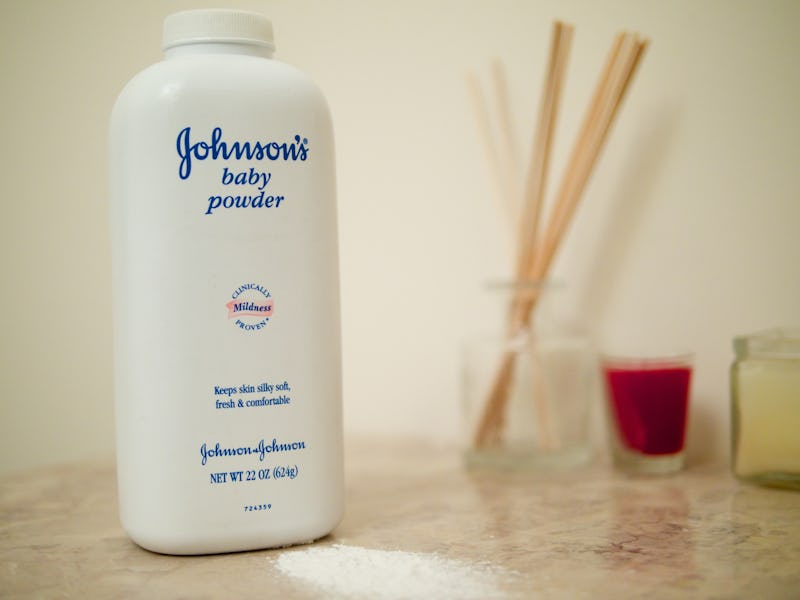Scientists Don't Know Whether Johnson & Johnson Baby Powder Causes Cancer
Early associations to asbestos raised fears about its link to cancer, but what we now know about talcum powder is inconclusive.

Long-time coddler of baby butts Johnson & Johnson was told to cough up $72 million in damages this week after its baby powder was blamed for an Alabama woman’s death by ovarian cancer. The verdict brought a three-week trial to a close, but the civil suit represented just one of dozens of lawsuits brought against the company by women claiming the health giant had failed to inform consumers about the dangers of talc, which is found in its famous baby powder.
It’s impossible, at this point, for the company to claim ignorance. A 1997 internal memo from a Johnson & Johnson medical consultant surfaced when the woman, Jackie Fox, first sued the company. So it’s clear that Johnson & Johnson was a least aware of a link between talc and ovarian cancer. The memo allegedly said that “anybody who denies [the] risks” between hygenic talc use and ovarian cancer is “denying the obvious in the face of all evidence to the contrary.”
These accusations against the corporate giant are serious, but the science is actually not totally clear. The link between ovarian cancer and talc first surfaced when talc was found incorporated in the tissue of women with the disease. Talc itself is a naturally occurring mineral — mostly made up of the elements magnesium, silicon, and oxygen — that, when ground up, absorbs moisture. Unfortunately, natural talc also sometimes contains asbestos, which, as schoolchildren and worried parents across the nation could tell you, is known to increase the risk of certain types of cancer.
But talcum products have been asbestos-free since the 1970s. So naturally occurring asbestos shouldn’t be a problem. This simply fails to resolve the situation.
There have been many studies looking at the possible link between asbestos-free talcum powder and ovarian cancer, especially after the Campaign for Safe Cosmetics began pressuring Johnson & Johnson to remove questionable ingredients from its products in 2009. The results, according to the American Cancer Society, have been mixed; for any individual woman, the organization writes, any overall increased risk “is likely to be very small.”
The International Agency of Research on Cancer, a branch of the World Health Organization, has also acknowledged the lack of conclusive information on the ovarian cancer-talc link. Currently, it considers asbestos-free talc as “not classifiable as to carcinogenicity in humans” and the use of talc-based body powder near the genitals as “possibly carcinogenic to humans.”
In light of the inconclusive scientific evidence, Johnson & Johnson is expected to appeal the verdict, though it has over 1,200 more similar lawsuits to deal with. In the meantime, consumers concerned that their penchant for freshness is compromising their health should follow the advice of Dr. Ranit Mishori, a professor of family medicine at Georgetown University who recently commented on the case: “If you are concerned,” she said, “Just don’t use it.”